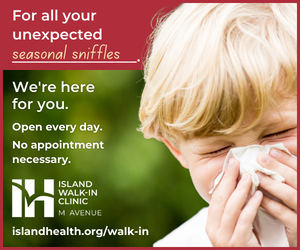Report: The Sound is holding on; recovery uncertain
A citizens’ view—
December 20, 2023
The Puget Sound Partnership recently released its biennial State of the Sound report concluding that while, overall, Puget Sound is holding on, its recovery remains uncertain (Puget Sound Partnership: State of the Sound (wa.gov)). This very mixed scorecard is concerning. Merely clinging to life with little movement towards improved health of the Sound, its ecosystems and species is not sufficient progress in restoring this beautiful inland sea around which we live.
The report uses 44 vital signs to represent the many aspects of the Sound’s health. While six of those vital signs are looking up and five are clearly down, 23 show no clear trend of decline or improvement and seven have mixed results (three have insufficient data). A few examples of the vital signs:
Estuarine wetlands, where fresh and saltwater mix, are critical to salmon, marine birds, shorebirds and waterfowl. Nearly 80% of estuarine wetlands around the Sound have been diked for urban development or farmland in the last 150 years. Recently that trend is reversing with 3,420 acres restored to estuarine wetlands since 2006, a vital sign headed in the right direction. However, while this is one area of clear gains, projected sea level rise over the coming decades could reverse those gains, drowning and squeezing out estuarine wetlands against dikes that prevent the shoreline from migrating upslope with rising waters.
Terrestrial birds, especially those dependent on the once thriving forests around the Sound, are in steady decline, starting in the late 1960s. For example the golden-crowned kinglet, one of our smallest perching birds, found primarily in montane conifer forests, has declined by 60% in the western U.S. over the last 60 years. Protection of mature and old growth forest is of particular importance to this species and others dependent on these habitats.
A sign with mixed results is that of marine birds. Four species were selected to represent marine birds in the Sound. marbled murrelet populations have been declining at a rate of 5% per year since 2000. Scoters have been declining at about 2% per year. Pigeon guillemots and rhinoceros auklet populations appear stable, although a recent study shows some declines in the latter.
If we want the Puget Sound to be the vital, functioning ecosystem it once was, we have to do more. We must protect and restore more estuarine areas and initiate plans to allow migration of those areas with sea level rise especially in the Sound’s major river deltas. We must protect old growth forests around the Puget Sound Basin and the Olympic Peninsula and protect and restore key marine habitats such as kelp and eelgrass beds. We must reduce shoreline hard armoring that impacts functioning shoreline ecosystems and production of forage fish, vital prey for salmon and marine birds.
Here in Skagit County, current exhibits and presentations at the Museum of Northwest Art are powerful reminders of the impact sea level rise and other effects of climate change are having locally. King tides and the flooding of homes and roads are just the beginning.
We live in a magnificent place struggling to hold its own and must all do more to help it recover and thrive.
Tim Manns is conservation chair of the Skagit Audubon Society.










Reader Comments(0)